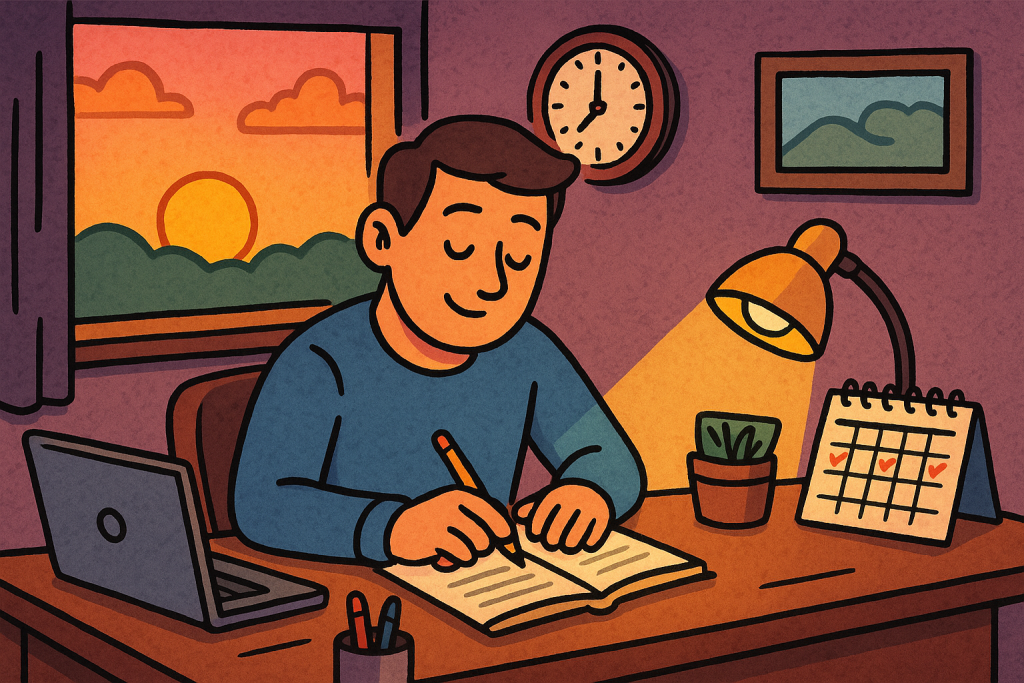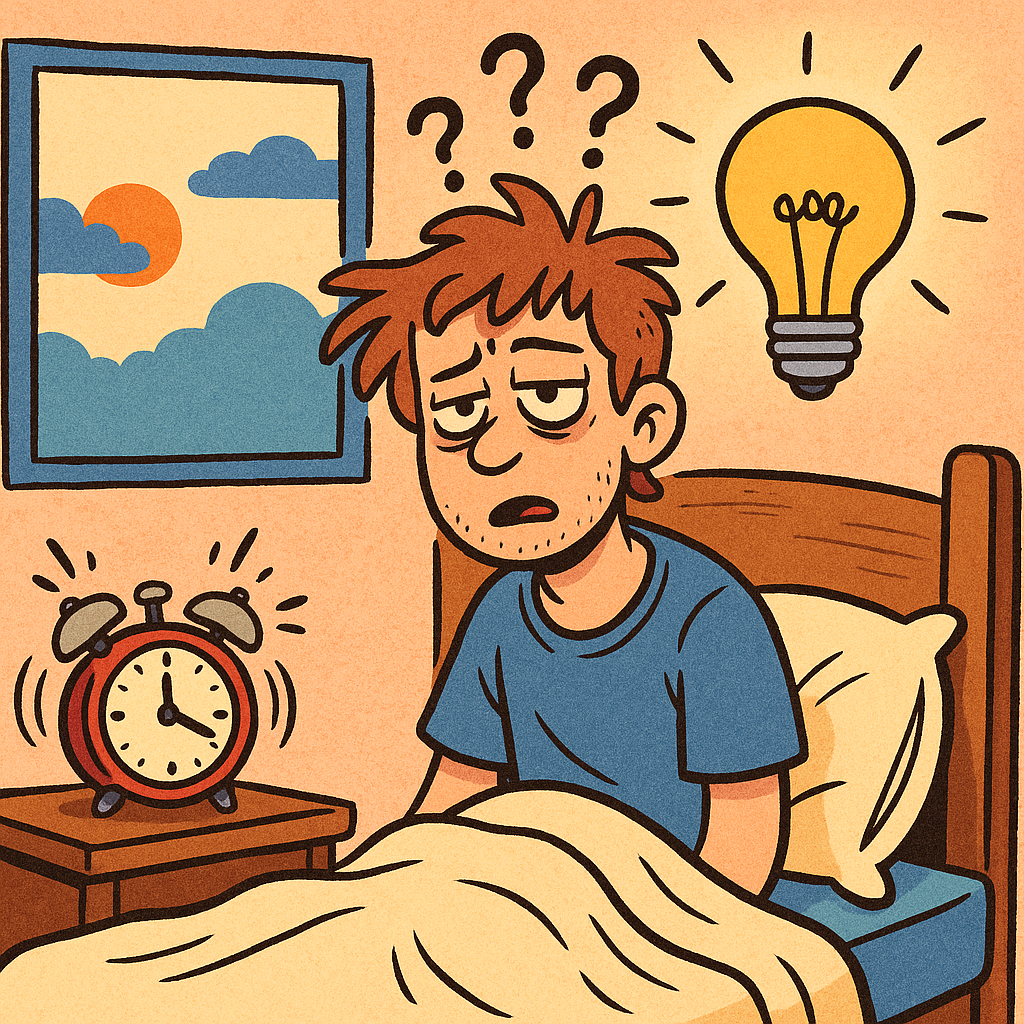A purposeful end‑of‑day ritual can redefine how you disconnect, recharge, and return tomorrow refreshed. With trends like digital detox, mindfulness tech, and shutdown routines gaining traction, more people are transforming their close‑of‑day habits for lasting mental clarity and productivity. The focus keyphrase—end‑of‑day ritual—appears here, and will be highlighted again to boost visibility.

Why an end‑of‑day ritual matters
Clear mental boundaries
Rituals create a psychological “bookend” that tells your brain work is done—boosting focus and helping avoid burnout.
Stress reduction & closure
Research shows rituals lower anxiety by triggering predictability in daily life—and finishing work explicitly supports detachment.
Better productivity tomorrow
Doc Cal Newport’s “shutdown ritual” eliminates open-ended tasks, reducing the mental Zeigarnik effect and freeing mental energy for tomorrow.
The Latest Trends in End‑of‑Day Rituals
1. Digital detox and “tech Sabbath”
Inspired by growing research on screen time’s toll on mental health, people are turning off devices at day’s end—or even for entire weekends.
Why it matters:
- Reduces sleep disruption from blue light
- Boosts focus and relaxation
How to begin:
- Set a nightly “tech turn‑off” alarm
- Designate 30 minutes device‑free before bed
- Use paper planners instead of apps for evening journaling
2. Mindfulness-infused wind‑down
Mindfulness meditation, gratitude journaling, or calming ritual exercises are rising trends for nighttime clarity.
Benefits:
- Mentally transitions out of work mode
- Combines emotional well‑being with productivity gains
Try this:
- Spend 5 minutes on guided meditation
- Write 3 things you’re grateful for each night
3. Calm technology
Calm tech—like ambient lights or gentle haptic reminders—keeps users informed without disrupting attention, making it ideal for evening rituals.
Examples:
- Soft “sunset lamp” that dims at end of workday
- Smart lighting that signals “work time over”
Why it works:
It blends relaxation with structure without being intrusive.
4. Smart wearable cues (Earables & haptics)
Wearables like earables are emerging in 2025. With sensors tracking stress and focus, they can prompt you to wind down when cortisol peaks.
Imagine:
- Earbuds that detect stress and suggest breathing exercises
- Haptic wristbands that vibrate an alert to end work
Step‑by‑Step Guide to a Modern End‑of‑Day Ritual
- Set a firm “shutdown time”
- Decide on a daily cutoff (e.g. 6 pm) and stick to it. Parkinson’s Law proves work fills available time—this boundary increases focus.
- Perform a physical shutdown
- Turn off your computer, clear desktop tabs, and close active apps. This symbolic action signals closure.
- Document and depose open tasks
- Jot down pending items to avoid mental clutter—hey Zeigarnik, clear incomplete loops.
- Mindful moment or gratitude journaling
- Record 3 good things that happened today and why.
- Shift with Calm tech or ambient cue
- Use a sunset lamp or calming haptics to move into personal time.
- Unplug digitally
- Go tech‑free for at least 30 minutes before bed. Mute notifications and avoid screens to improve sleep quality.
- Optional light reading or reflection
- Dig into a book, reflect on personal goals, or plan the next day briefly.
Sample Ritual Routine (Evening Timeline)
| Time | Task |
|---|---|
| 6:00 pm | Shut down work devices |
| 6:05 pm | Write down pending tasks & gratitude list |
| 6:15 pm | Turn on calm lamp or wearable prompt |
| 6:20 pm | 5‑minute breathing meditation |
| 6:30 pm | Tech-free time begins |
| 7:00 pm+ | Leisure time / personal wellness |
Why This Works (Backed by Science)
Rituals aid psychological transitions
Duke University found that end‑of‑work rituals ease the mental shift from “employee” to “individual,” reducing stress.
Predictability enhances well‑being
Harvard Business Review research indicates structured rituals reduce anxiety and improve focus.
Gratitude amplifies sleep & positivity
Studies show daily gratitude journaling boosts optimism, sleep quality, and physical health.
Tech & Tools to Support Your Ritual
- Smart bulbs (Philips Hue, LIFX): program to dim at your cutoff time.
- Earable devices: monitor stress, prompt mental breaks.
- Haptic wearables (Oura Ring, Apple Watch): set gentle reminders to check in.
- Analog tools: gratitude journal, pen + paper planner.
- Meditation apps: Calm, Headspace—use for your nightly 5‑minute session.
Tips for Sticking With It
- Start small: Only select 2–3 steps initially.
- Track your progress: Use a habit‑tracker or journal.
- Adjust to lifestyle: Some may prefer longer unplug periods once weekly.
- Stay flexible: If an evening ritual feels monotonous, refresh it periodically (change prompts, swap candles, etc.)
Emerging Directions to Watch
- AI‑powered shutdown assistance: Next-gen to‑do apps will use GenAI to summarize your day and suggest tomorrow’s focus.
- Adaptive calm tech: Devices learning your stress signals to trigger shutdown cues automatically.
- Personalized wearables: Earables and wristbands with tailored evening prompts based on physiology.
Conclusion
A thoughtfully crafted end‑of‑day ritual isn’t optional—it’s essential for maintaining productivity, preserving well‑being, and tackling burnout head‑on. By blending practical steps—shutdown rituals, gratitude, digital detox—with emerging calm‑tech, you’ll build a durable evening practice that truly closes the day. Whether you’re setting devices aside, lighting a sunset lamp, or jotting down three good things, these rituals signal closure, calm the mind, and prepare you for tomorrow’s challenges.
References
Newport, C. (2023). Stressed at Work? Try Following a “Shutdown Ritual”. Medium. Retrieved from https://medium.com
Todoist Team. (n.d.). Here’s Why Everyone Should Have a Work Shutdown Ritual. Todoist Inspiration. Retrieved from https://www.todoist.com/inspiration/end-work-day
Harvard Business School. (2016). Rituals improve performance by decreasing anxiety. Harvard Business Review PDF. Retrieved from https://www.hbs.edu






